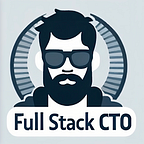Mastering Code Organization in Google Apps Script
Top Low-Code Architecture Practices for Google Apps Script Environments
Today, I’m thrilled to share with you some of the best practices and strategies for code organization that really unlock the full potential of this powerful platform. Refactoring Code for Reusability is a game changer in the way we handle our development processes.
The Art of Code Reusability
One of the cornerstones of effective code organization is the ability to reuse code efficiently. Google Apps Script champions this through the practice of isolating common code — think utility functions or shared configurations — into separate files. This not only simplifies maintenance and updates but also keeps the core application logic clean and uncluttered.
The Unified Scope Advantage
It’s crucial to highlight that in Google Apps Script, all script files within a project are loaded and executed within a single, global scope. This means the sequence of files has zero impact on the accessibility of functions or variables across your project. Thus, you’re free to invoke any function from any file without a second thought about the order in which they load.
Key Considerations for Smooth Sailing
- Unique Naming Convention: To steer clear of naming conflicts and overwrites, it’s critical to adopt unique names for variables and functions across your project files.
- Leveraging External Libraries: External libraries, once incorporated via the “Resources” menu, meld into the global scope and are accessible project-wide, without any file order restrictions.
- Code Compilation: Prior to execution, Google Apps Script compiles all project code into a single script, ensuring all functionality, irrespective of the file order, is readily available.
Strategies for Clean Code
For maintaining pristine and manageable code, it’s advisable to cluster related functions and variables within distinct files, named clearly and descriptively. This approach not only makes project navigation a breeze but also clarifies the project’s structure for you and potentially other developers who may contribute to the codebase.
Conclusion
Effective code organization within Google Apps Script is a pivotal aspect of development that significantly influences both efficiency and ease of project maintenance. By segregating common code into dedicated files and adhering to best practices around naming uniqueness and project structuring, you can dramatically streamline the development and upkeep of your CRM systems. These methodologies and insights stem from years of hands-on experience with Google Apps Script, enabling the creation of robust, scalable, and easily supported applications.
